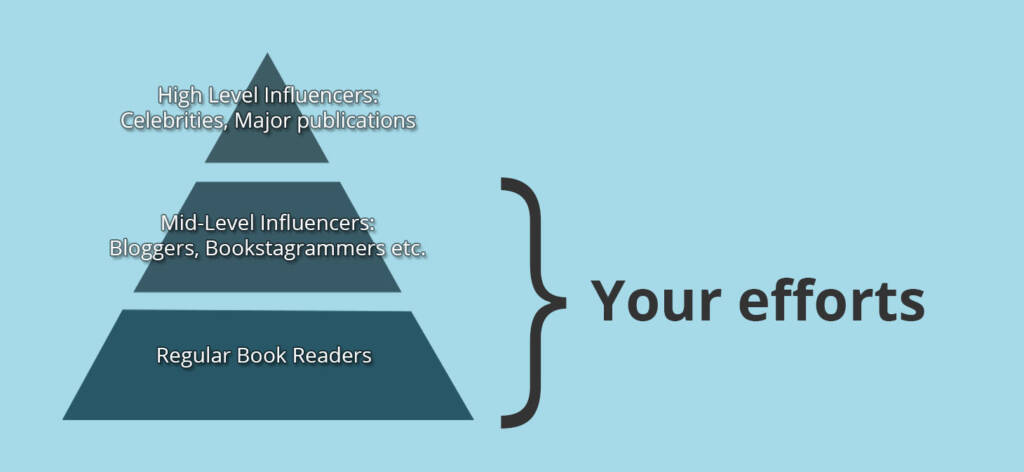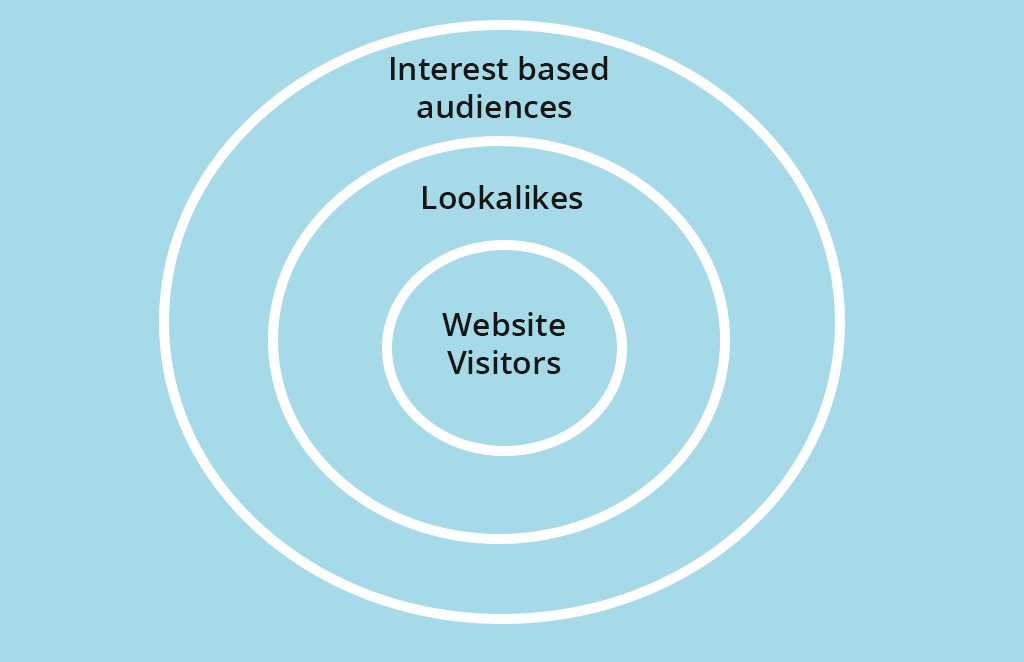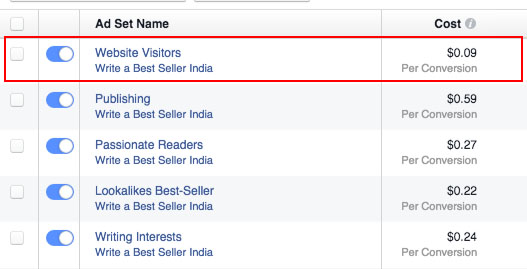They’re all making it up. The authors who say they are #1 Bestsellers, the literary festivals that gush over the boom in Indian publishing, the press that makes up extravagant book sales numbers, everyone. I don’t blame them. Writing a book consumes your life leaving you lying spent on the floor after you’re done with it. You need validation to pick up the pieces again. Unfortunately, book sales in India are not that validation. Here are some real book sales numbers based on extrapolation of a few different data points*:
- 90% of books published in India sell <2,000 copies/year.
- 9% of books sell between 2,000-10,000 copies.
- <1% sell >10,000 copies (True “bestsellers”).
How do you reliably make it to the 1% with every book you write? How do you create a true groundswell for your books so you don’t have to ask your corporation to place a “bulk order”, one of the many ways to game the bestseller lists for one week? Here I share a few suggestions to create an authentic bestseller that endures a decade not a week. Note though, I’m not the best author to take marketing advise from. I don’t have the followings of Chetan or Amish. I don’t know what genre I write in, who my target audience is and when my next book will come out. Only when an idea or a character completely takes over my life and compels me to write do I write a book. I’d probably sell more books if I were more predictable. Or even if I knew who I was writing for. But I can’t. I just write what matters to me. And each book strips me off everything I know and it takes me years to learn new things again. Yet my books manage to find their audiences so there’s much hope for you to do far better than me.
Here is a brief summary of my real book sales to date.
Keep off the Grass (2008): 80,000 copies.
Johnny Gone Down (2010): 60,000 copies
The Seeker (2015): 30,000 copies in 6 months.
Total=170,000 copies. This doesn’t included pirated copies, which should add a minimum of 30% to the number to take the total to 200,000+.
Marketing Lessons from launching an authentic bestseller
1. Write a book that matters at-least to you.
You can’t outsource marketing your book to an agency. It’s work, as you’ll see in my points below. Are you truly prepared to give so much of yourself to it? Your answer will be a resounding yes only if you’ve set your life on fire to write your book and now you want everyone to see the light. Not because of petty fame but because you’ve figured something out about the messy, glorious human condition. Or at-least you think you have. Without that conviction, I’d say move on quickly to the next book and make it the one you’re willing to put everything—money, security, dignity—on line for. Then, follow the steps below.
2. Grassroots is your #1 strategy.
80% of your efforts should be focused on the bottom two rungs of this pyramid.
Instead, authors spend a majority of their time trying to get mega-influencers attention—getting Salman Rushdie’s blurb, paying Times of India to write about their book etc. None of that moves the needle. When was the last time you bought a book after seeing a photograph of a Page 3 book launch event? The #1 driver of book sales is word-of-mouth and the only way to drive that is to get the book in the hands of hundreds of readers.
In the US, you can achieve the same outcome with mid-level influencers—book bloggers, Bookstagrammers etc. but in India, few bloggers have passionate, loyal followings so your best bet is hand-to-hand combat. For Keep off the Grass in 2008, for instance, I reached out 1:1 to everyone on Orkut (the dominant social media then) who had self-identified themselves as fans of books like English August to introduce myself and give free book excerpts over a period of six months. The same approach won’t work now when social media has become so spammy, of course, but you can achieve the same outcome with a different approach. Amish went book-store by book-store to promote his books. From what Penguin tells me, Durjoy Datta goes to colleges in fifty different cities to talk about his books. Giving away excerpts and free advance copies of your books to as many people as you can in your genre are the single most effective strategy for selling your book. Even in the best case, you’ll be able to give 1000 copies of your book for free. The resultant word-of-mouth will easy offset the sales loss and give you an honest chance to create a phenomenon. Even for The Seeker, which I marketed very little, since I was focused on the US launch, the single best marketing I did to get the book off to a solid start (#2 bestseller in HT-AC Nielsen Scan Week 1) was to offer free excerpts and review copies online.
3. Advertising works best as a supplement to content.
I’ve invested a lot of money in digital advertising, both in my work as Chief Marketing Officer of a start-up and in my online course and book launches. Again and again, I see the same pattern emerge: the only advertising that generates a positive ROI is advertising to your website visitors (or fans or mailing list subscribers) and to an extent, lookalike audience of website visitors.
Anything beyond this bullseye target is a ROI negative spend. Here’s a look at a recent Facebook campaign I ran for instance for my online course — the conversion costs of website visitors are at-least 60% lower than any other audience.
Said another way, people have to know you and what you believe in (and as a result want to visit your website or fan page) before they buy your book. And the best way to do that is to write about topics that consume your soul and perhaps inform and educate a little as well. I get about 50,000 visitors a month on my website and almost none of them come because of my books. They come for articles like these.
https://www.karanbajaj.com/how-to-finally-start-meditation-in-2016-a-complete-guide/
Eventually, I hope they buy my books but even if they don’t, I write what I’m deeply interested in so that is its own reward.
P.S: If you still want to spend on advertising to sell your book, here’s a very detailed Facebook advertising guide on how to achieve a break-even on your spend.
https://www.karanbajaj.com/the-only-book-advertising-approach-that-works/
4. Get one blurb that counts.
Keep off the Grass had just one blurb—Ruskin Bond.
“A racy and entertaining account of a romp through an ever-changing yet timeless India…wild, witty and wicked !” — Ruskin Bond.
Johnny Gone Down had blurbs from everyone from media—Hindustan Times, India Today, Times of India, CNN IBN—to celebrity blurbs like these.
“An Amazing journey. Wonderful characters who keep you hooked till the very end” — Raju Hirani, Director Munnabhai/ 3 Idiots.
“One incredible adventure. What a read!” — Ajay Devgan, Actor.
Result, no difference. If at all, I think Keep off the Grass took off faster than Johnny though Johnny will remain my deeper-felt novel among the two. One effective blurb from someone with a loyal, passionate following is all it takes to establish credibility. Don’t go after numbers.
5. Don’t waste time on social media. Instead, create a passionate email list.
The #1 time killer for authors is social media. Facebook’s organic reach is down to a decimal point. Twitter is full of spam. Yet authors spend hours composing the perfect post, the perfect Tweet, that’ll sell less than ten copies. Thankfully, there’s an alternative. Build a deep, passionate e-mail list. Here is an excellent comparison on the effectiveness of an email list vs. Facebook and Twitter (source: Devesh Design).
Yes, an email list is 50-100 times more effective than Facebook fans and Twitter followers. How do you build an email list? There are enough Internet experts who blog about this full-time so I won’t go into detail here. But two principles that worked for me to grow from zero to 10,000 subscribers in less than a year:
a) Offer real value for them to join your list. For example, this is the call-out on my home page(you can join by the way!).
b) Treat them as friends rather than subscribers and share the best of what you know with them. Here is how my email for folks begins this week, for example.
Dear X,
I was thinking about two completely unrelated ideas that may be interesting for you to contemplate this weekend:
1. A life is measured in decades not in years.
Six years ago, I left a long relationship just when I was turning thirty. This was India in 2009, a different world than it’s now I think. All my friends were having their second kids. My family wanted me settled. The usual chorus of voices around me was calling me irresponsible, selfish etc.
But deep down, I knew it wasn’t right — for either of us.
Each week I send emails with personal stories and ideas about things that matter to me and I think could add some value to my subscribers’ lives. Rarely do I promote my books to my list but when I do they always zoom up to the Top 100 on Amazon. In contrast, I see little movement in my rankings when I post on social media.
6. Hire a PR agency only for vanity.
I’ve gotten great press for each of my novels—and it’s never moved the needle. Johnny Gone Down fell off the India Today bestseller lists the same month India Today named me a “Top 35 Under 35” Indian. Elle wrote an entire feature about me as did The Telegraph and Times of India and the book didn’t budge in Amazon rankings the same week they all appeared. There’s a role for press, of course, and I recommend it. But know what the role is. It’s for vanity not sales. Vanity matters. Now, your aunt in Surat finally knows why you’ve spent years in a dungeon. And your girlfriend realizes why your socks never match. But only you can decide what you should pay for vanity. These are two publicists I recommend who’ll get you your money’s worth (in five seconds of fame not sales):
1. Werner Fernandez
2. Paradigm Shift
If you forget everything above, don’t worry for an instant. Just remember the first point. Write a book that matters. Everything else is dust as the Buddha would say, a castle in the sand that’ll be swept away by the next wave. Just let your words resound in eternity.
*Data extrapolated on comparing my weekly ranking on Amazon with books sold over 12 weeks, qualitative interviews with sales teams at the Top 3 publishing houses, and a few authentic secondary research articles like these.





















95 Comments